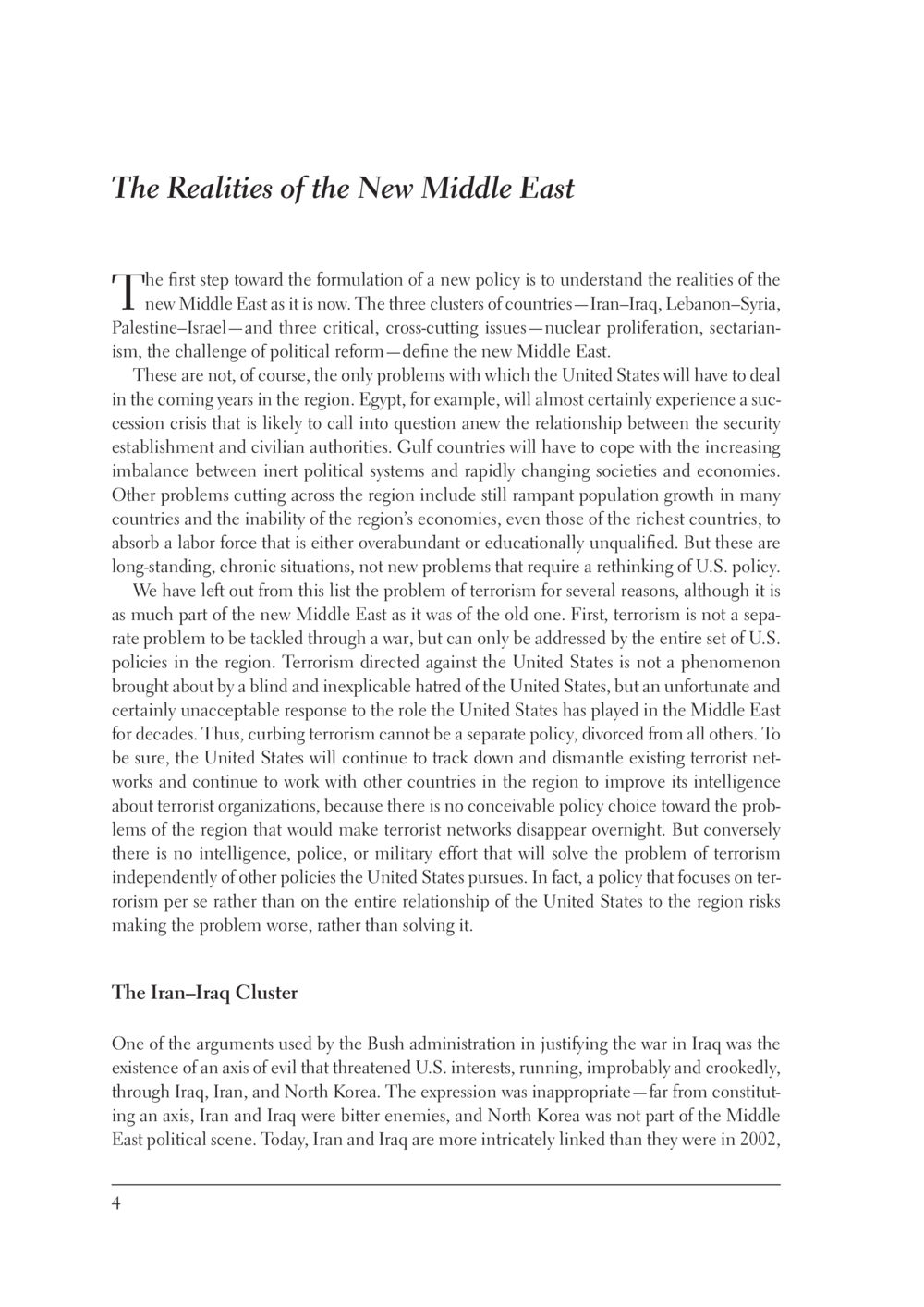The Reality of the New Middle East : หน้า 10/52
The New Middle East : หน้า 10/52 An analysis of the complexities and challenges in the new Middle East, including political reform, terrorism, and regional dynamics.
0 ครั้ง

สรุปเนื้อหา
The new Middle East is defined by three country clusters: Iran–Iraq, Lebanon–Syria, and Palestine–Israel, intertwined with issues such as nuclear proliferation and sectarianism. The U.S. faces not just terrorism but also ongoing crises like Egypt's succession and the socio-economic disparities in Gulf countries. Terrorism is a response to U.S. actions, pointing to a need for integrated policies rather than isolated solutions, as evidenced in the evolving relationship between Iran and Iraq post-war.
หัวข้อประเด็น
-Middle East complexities
-Iran-Iraq relations
-Terrorism and policy
-Political reform challenges
-Socio-economic issues in the Gulf
ข้อความต้นฉบับในหน้า
The Reality of the New Middle East
The first step toward the formulation of a new policy is to understand the realities of the new Middle East as it is now. The three clusters of countries — Iran–Iraq, Lebanon–Syria, Palestine–Israel — and three critical, cross-cutting issues — nuclear proliferation, sectarianism, the challenge of political reform — define the new Middle East.
These are not, of course, the only problems with which the United States will have to deal in the coming years in the region. Egypt, for example, will almost certainly experience a succession crisis that is likely to call into question anew the relationship between the security establishment and civilian authorities. Gulf countries will have to cope with the increasing imbalance between inert political systems and rapidly changing societies and economies. Other problems cutting across the region include still rampant population growth in many countries and the inability of the region’s economies, even those of the richest countries, to absorb a labor force that is either overbaudant or educationally unqualified. But these are long-standing, chronic situations, not new problems that require a rethinking of U.S. policy.
We have left out from this list the problem of terrorism for several reasons, although it is as much part of the new Middle East as it was of the old one. First, terrorism is not a separate problem to be tackled through a war, but can only be addressed by the entire set of U.S. policies in the region. Terrorism directed against the United States is not a phenomenon brought about by a blind and inexplicable hatred of the United States, but an unfortunate and certainly unacceptable response to the role the United States has played in the Middle East for decades. Thus, curbing terrorism cannot be a separate policy, divorced from all others. To be sure, the United States will continue to track down and dismantle existing terrorist networks and continue to work with other countries in the region to improve its intelligence about terrorist organizations, because there is no conceivable policy choice toward the problems of the region that would make terrorist networks disappear overnight. But conversely there is no intelligence, police, or military effort that will solve the problem of terrorism independently of other policies the United States pursues. In fact, a policy that focuses on terrorism per se rather than on the entire relationship of the United States to the region risks making the problem worse, rather than solving it.
The Iran–Iraq Cluster
One of the arguments used by the Bush administration in justifying the war in Iraq was the existence of an axis of evil that threatened U. S. interests, running, improbably and crookedly, through Iraq, Iran, and North Korea. The expression was inappropriate — far from constituting an axis, Iran and Iraq were bitter enemies, and North Korea was not part of the Middle East political scene. Today, Iran and Iraq are more intricately linked than they were in 2002,
หน้าหนังสือทั้งหมด
หนังสือที่เกี่ยวข้อง
Load More




















































